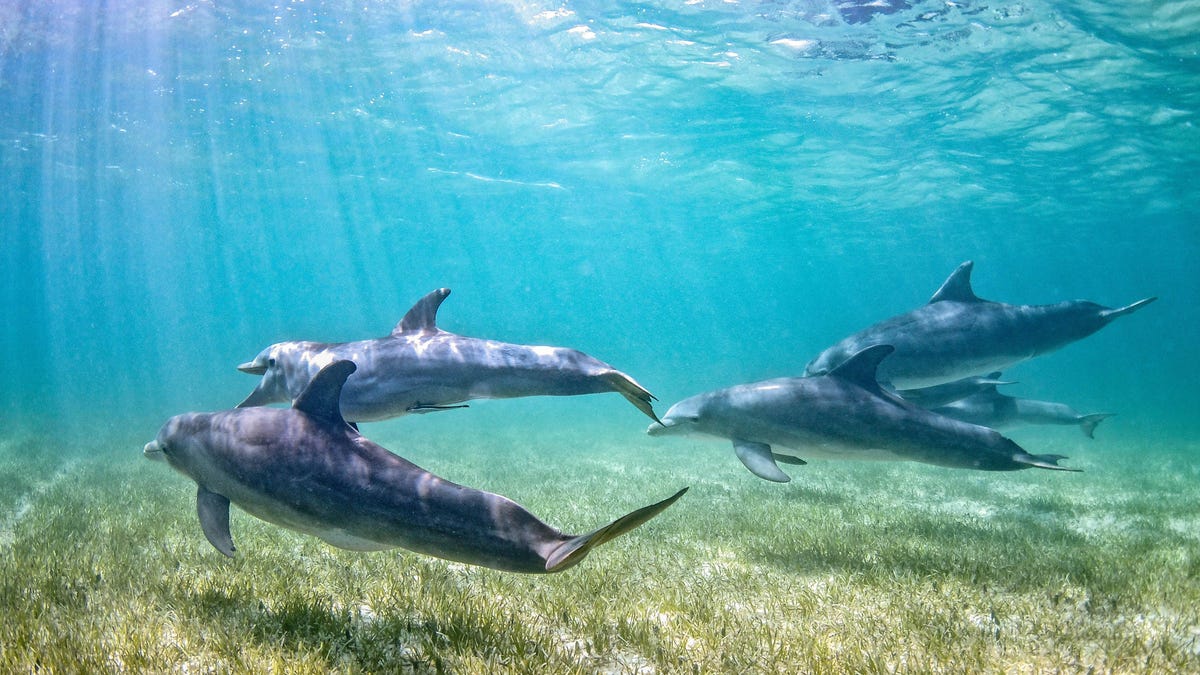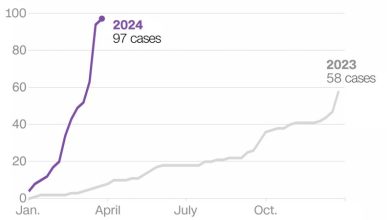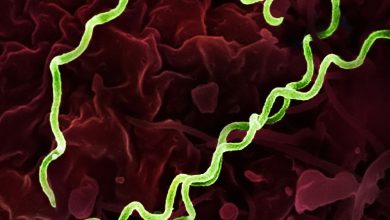Florida Dolphin Dies of Bird Flu as Alarm Grows Over Species Spread

Bird flu isn’t just hiding in cows, new research shows. Scientists in Florida have reported the first known case of highly pathogenic H5N1 avian influenza in a common bottlenose dolphin (Tursiops truncatus). Although the case dates back to 2022, this is the latest indication that these flu strains can potentially infect a wide variety of mammals.
The report was published Friday in nature newspaper Communications Biology. According to the newspaper, the flu-infected dolphin was first identified on March 29, 2022. Researchers with the University of Florida Marine Animal Rescue Program were notified of the presence of a dolphin that appeared clearly in distress around the waters of Horseshoe Beach in northern Florida. . But by the time they arrived, the dolphin was already dead. He was then packed in ice and taken to the university for an autopsy the next day.
The necropsy revealed signs of ill health and inflammation in the dolphin’s brain and meninges (the membrane layers that protect the brain and spinal cord). The dolphin tested negative for other common infectious causes of brain inflammation, prompting researchers to expand their search. They knew that wild birds could develop neuroinflammation from highly pathogenic strains of avian flu, that several flu-related bird deaths had occurred recently in the region, and that recent outbreaks had occurred elsewhere among many others. other populations of marine mammals. So they decided to screen him. Tests then revealed the presence of H5N1 in the dolphin’s lungs and brain.
There have been observations highly pathogenic avian influenza (HPAI) in other marine mammals, such as harbor seals and other dolphin species. But this is the first reported case in a common bottlenose dolphin and the first report in a cetacean (dolphins and whales) in North American waters.
Avian flu strains are classified as highly pathogenic when they cause severe illness and death in wild birds. It is therefore not necessarily certain that they will be as dangerous for the other animals they infect. Current epidemics of H5N1 avian flu in cows, for example, have so far caused generally mild illnesses. But strains belonging to this particular lineage of H5N1 (2.3.4.4b) have proven to be deadly to marine mammals.
In this case, the strain does not appear to have developed any known genetic changes that would facilitate its infection and transmission between mammals, the authors found. But flu viruses mutate very quickly, leaving open the possibility that some strains will adapt and undergo appropriate changes that can make them a much greater threat to land and marine mammals.
“Aside from the risk to human health, the consequences of the adaptation of the A(H5N1) virus for increased replication and transmission between dolphins and other cetaceans could be catastrophic for these populations,” the authors write.
Researchers continue to investigate this case, hoping to identify the origins of the dolphins’ infection and better understand the possibility of avian flu strains successfully crossing the species barrier to these Marine mammals.
More: $20,000 reward offered after discovery of slaughtered dolphin in Louisiana
News Source : gizmodo.com
Gn Health





